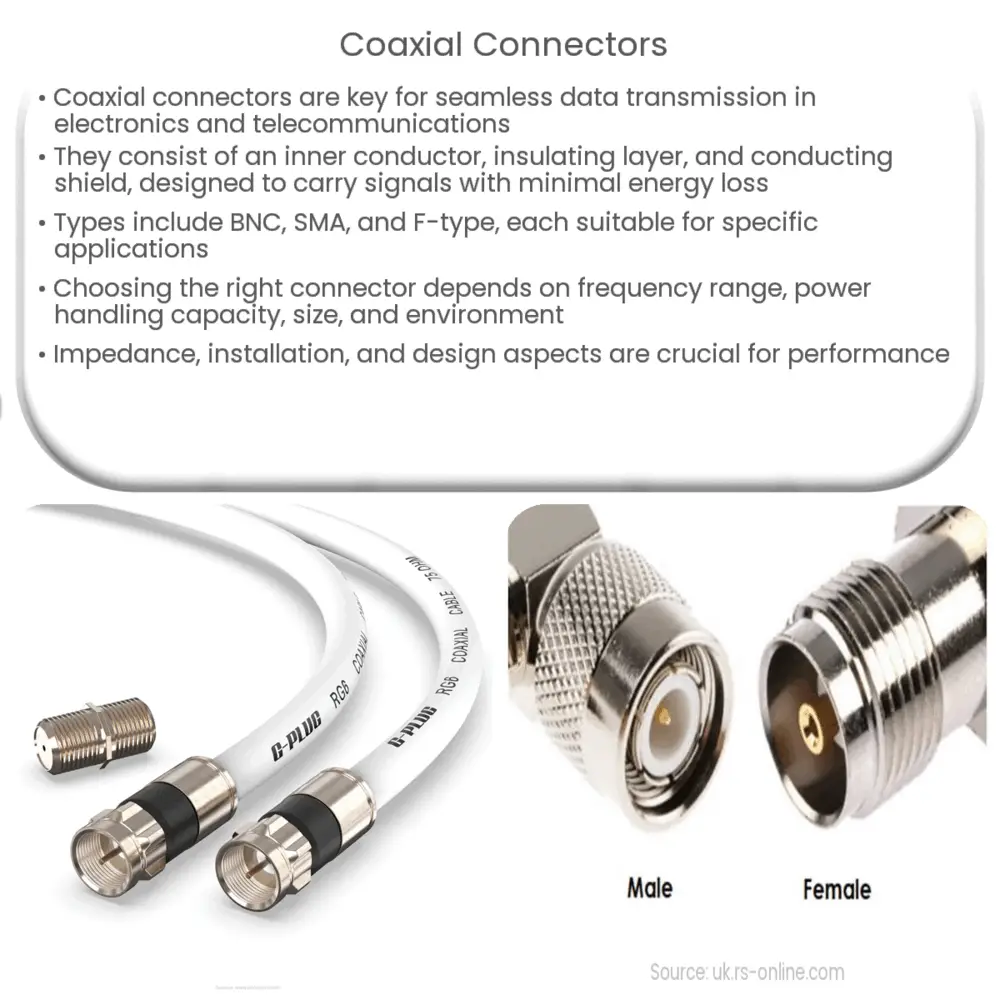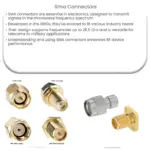Explore the world of coaxial connectors, their types, selection process, and significance in electronics and telecommunications in our comprehensive guide.

Understanding Coaxial Connectors
Coaxial connectors, often simply referred to as ‘coax connectors,’ are an integral part of electronics and telecommunications systems. They serve a fundamental purpose in our daily lives, ensuring seamless data transmission and reception across a multitude of devices and platforms.
The Anatomy of Coaxial Connectors
At its core, a coaxial connector consists of an inner conductor surrounded by an insulating layer. The insulator is further encapsulated by a conducting shield. Many connectors also have an outer insulating layer for additional protection. The uniqueness of this design lies in its ability to carry electric signals with minimal loss of energy, while effectively insulating them from external electromagnetic interference.
Types of Coaxial Connectors
Choosing the Right Coaxial Connector
Choosing the right coaxial connector for your specific use case is crucial for ensuring optimal system performance. The choice depends on multiple factors including the frequency range, power handling capacity, size constraints, and environmental considerations.
The Importance of Impedance
Impedance is a critical parameter in coaxial connectors. It’s typically 50 ohms for radio and television transmissions and 75 ohms for video and CATV. Using a coaxial connector with the wrong impedance can lead to signal reflection, resulting in poor signal quality and transmission loss.
Installation and Maintenance
Coaxial connectors can be soldered or crimped onto coaxial cable, depending on the specific connector design. Proper installation is crucial to maintaining a consistent impedance across the connector interface. Regular maintenance, including cleaning and checking for damage, ensures longevity and reliable performance.
Key Considerations in Connector Design
While the basic structure of coaxial connectors is standard, different designs accommodate a variety of needs. Some connectors are built to withstand harsh environmental conditions, while others are designed for applications requiring high-frequency precision. Connectors may also feature mechanisms for quick connection and disconnection.
Modern Developments in Coaxial Connectors
As technology advances, so does the design and manufacturing of coaxial connectors. Many are now designed to support digital signals for improved data transmission efficiency. Connector materials and designs are constantly evolving to reduce signal loss and enhance frequency performance, meeting the demands of modern high-speed, high-frequency applications.
Conclusion
In conclusion, coaxial connectors play a crucial role in the realm of electronics and telecommunications. They ensure efficient and reliable data and signal transmission across an array of devices, contributing significantly to our interconnected world. Understanding the different types, their specific uses, and the factors affecting their performance can help in making informed choices for your specific needs.
With constant advancements in technology, we can expect the capabilities of coaxial connectors to continue to evolve, providing ever greater performance and meeting the increasingly sophisticated requirements of modern electronics and telecommunications systems.



